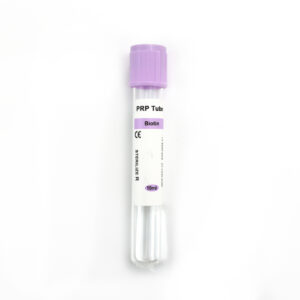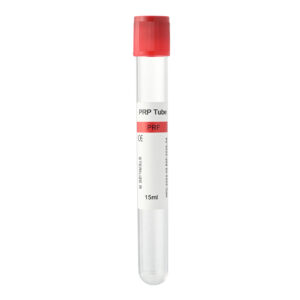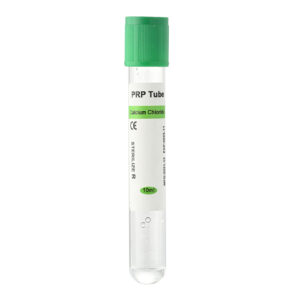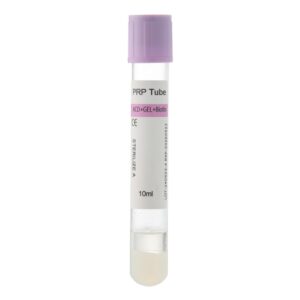Platelet-rich plasma (PRP) has gained significant attention in today’s medical field for its remarkable effects on tissue repair and regeneration. The preparation of PRP is a complex and critical process that involves multiple steps and the use of various reagents. Among these, the choice of anticoagulant is particularly important as it directly impacts the quality of PRP and its therapeutic outcomes. This article delves into the role of ACD-A (Acid Citrate Dextrose Solution A) in PRP preparation, detailing its advantages, applications, and key considerations to help medical professionals better understand and utilize this technology.
1. Understanding PRP
1.1 What is PRP?
Platelet-rich plasma (PRP) is a concentrated form derived from a patient’s blood, typically obtained through centrifugation. Platelets play a crucial role in blood clotting and healing processes due to their rich content of growth factors and cytokines, such as Platelet-Derived Growth Factor (PDGF) and Transforming Growth Factor-beta (TGF-β). These components significantly aid in tissue repair and regeneration.
1.2 Applications of PRP
PRP is widely used across various medical fields, including but not limited to:
- Plastic Surgery: For skin regeneration and scar repair.
- Sports Medicine: To promote the healing of tendons, ligaments, and joints.
- Dentistry: To accelerate the healing of the alveolar bone and support implant stability.
- Orthopedics: For bone fracture healing and cartilage repair.
2. Key Steps in PRP Preparation
2.1 Blood Collection
The first step in preparing PRP involves drawing a specific volume of the patient’s blood, typically between 10 to 60 milliliters, depending on the treatment requirements and the patient’s blood condition.
2.2 Adding Anticoagulant
An appropriate amount of anticoagulant must be added to prevent the blood from clotting outside the body. The choice and quantity of anticoagulant are crucial for the quality of PRP. Common anticoagulants include heparin, sodium citrate, and ACD-A.
2.3 Centrifugation
After blood collection, the blood is subjected to centrifugation. This process usually involves one or more spins to separate the blood into different layers. The platelet-rich plasma layer, which contains a high concentration of platelets and growth factors, is extracted as PRP.
2.4 Activation of PRP
An activator (such as calcium ions or hyaluronic acid) is sometimes added to the PRP to stimulate platelets to release growth factors, enhancing the therapeutic effect.
3. What is ACD-A?
3.1 Full Name and Composition of ACD-A
ACD-A stands for Acid Citrate Dextrose Solution A, a commonly used anticoagulant solution. Its main components include:
- Sodium Citrate: Acts as an anticoagulant by binding calcium ions, thereby inhibiting the coagulation process.
- Calcium Gluconate is a calcium source that maintains the balance of calcium ions in the blood.
- Dextrose (Glucose): Helps stabilize the blood components.
3.2 How ACD-A Works
ACD-A prevents blood clotting by chelating calcium ions in the blood, stopping the conversion of prothrombin to thrombin, which is essential for clot formation. This ensures that the blood components remain stable during PRP preparation, maintaining the quality and effectiveness of PRP.
4. Advantages of Using ACD-A in PRP Preparation
4.1 Enhances Platelet Concentration
Compared to other anticoagulants, ACD-A effectively prevents blood clotting, ensuring a higher concentration of platelets remains in the plasma. This directly enhances the therapeutic potential of PRP.
4.2 Preserves Growth Factor Activity
ACD-A minimally affects platelets and other blood cells, preserving the activity and functionality of growth factors. This is crucial for the effectiveness of PRP in tissue repair and regeneration.
4.3 High Biocompatibility
The components of ACD-A are highly biocompatible, reducing the risk of immune or allergic reactions. This ensures the safety and efficacy of PRP treatments.
4.4 Good Stability
ACD-A effectively delays blood clotting under ex vivo conditions, ensuring a stable preparation process. This reduces variability during PRP preparation, enhancing consistency and reliability.
4.5 Simplified Operation
Using ACD-A simplifies the PRP preparation process, making it easier to standardize procedures. This reduces the likelihood of human error and improves the overall quality of PRP.
5. Practical Applications of ACD-A in PRP Preparation
5.1 Standardizing Preparation Procedures
Using ACD-A as an anticoagulant allows for the standardization of PRP preparation procedures. Precise control of ACD-A quantities and timing ensures consistent PRP quality, making treatment outcomes more predictable.
5.2 Meeting Diverse Medical Needs
ACD-A maintains high platelet concentrations and growth factor activity, making it suitable for various medical applications that require effective PRP, such as sports injury recovery, cosmetic skin treatments, and orthopedic therapies.
5.3 Enhancing Patient Satisfaction
High-quality PRP improves treatment outcomes and minimizes potential side effects and adverse reactions. This leads to higher patient satisfaction and trust in the treatment process.
6. Key Considerations When Choosing ACD-A
6.1 Accurate Dosing
It is essential to accurately measure the amount of ACD-A based on the volume of blood collected and the specific requirements of PRP preparation. Overuse can lead to residual anticoagulants in PRP, while underuse may result in ineffective blood clot prevention.
6.2 Maintaining Sterility
Anticoagulants and blood collection must adhere to strict sterile conditions to prevent bacterial contamination. This ensures the safety and effectiveness of the PRP.
6.3 Equipment Maintenance
The performance of centrifuges directly affects the separation quality and PRP yield. Regular maintenance and calibration of centrifugation equipment are vital to ensure stable and precise operations and guarantee high-quality PRP.
6.4 Considering Individual Differences
Patients have varying blood compositions and coagulation functions. To achieve the best PRP quality, it is important to adjust the amount of ACD-A and centrifugation parameters based on each patient’s specific conditions.
7. Comparing ACD-A with Other Anticoagulants
7.1 ACD-A vs. Heparin
Heparin is another common anticoagulant but may affect platelet function and reduce the activity of growth factors during PRP preparation. ACD-A has a lesser impact on platelets and growth factors, making it more suitable for PRP.
7.2 ACD-A vs. Sodium Citrate
Sodium citrate is also widely used as an anticoagulant, but its strong calcium-binding ability can lead to excessively low calcium levels in PRP, affecting platelet function. ACD-A provides milder calcium chelation, maintaining a better balance of calcium ions and platelet functionality.
7.3 Overall Advantages of ACD-A
Overall, ACD-A excels in maintaining high platelet concentrations, preserving growth factor activity, and offering high biocompatibility, making it the preferred anticoagulant for PRP preparation.
Conclusion
ACD-A is an efficient, stable, and highly biocompatible anticoagulant essential in the preparation of PRP. Proper use of ACD-A enables medical institutions to produce high-quality PRP, enhancing treatment outcomes and improving patient recovery experiences. Understanding and mastering the application of ACD-A in PRP preparation not only elevates the level of medical services but also contributes to the advancement of medical technology.
If you have any questions about PRP preparation or the use of ACD-A, feel free to consult our professional team. We are dedicated to providing detailed answers and high-quality services to support your medical endeavours.





